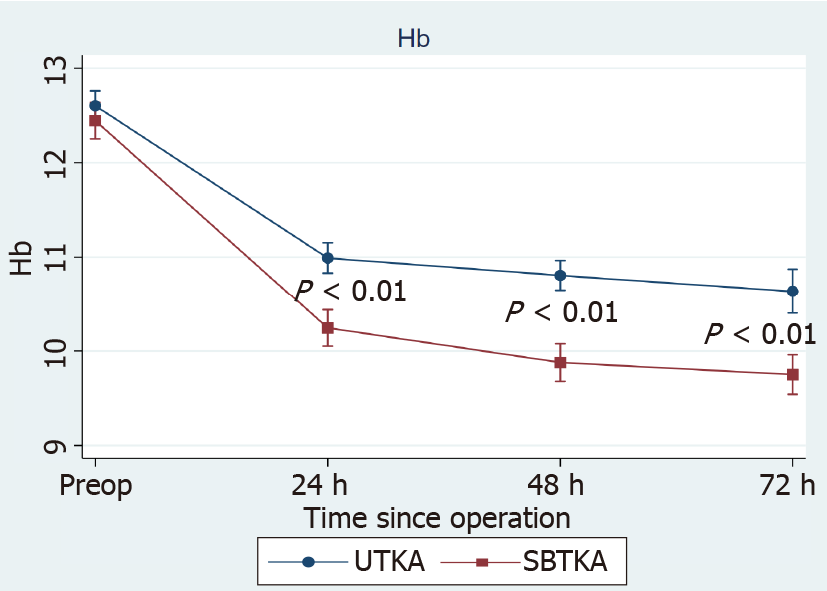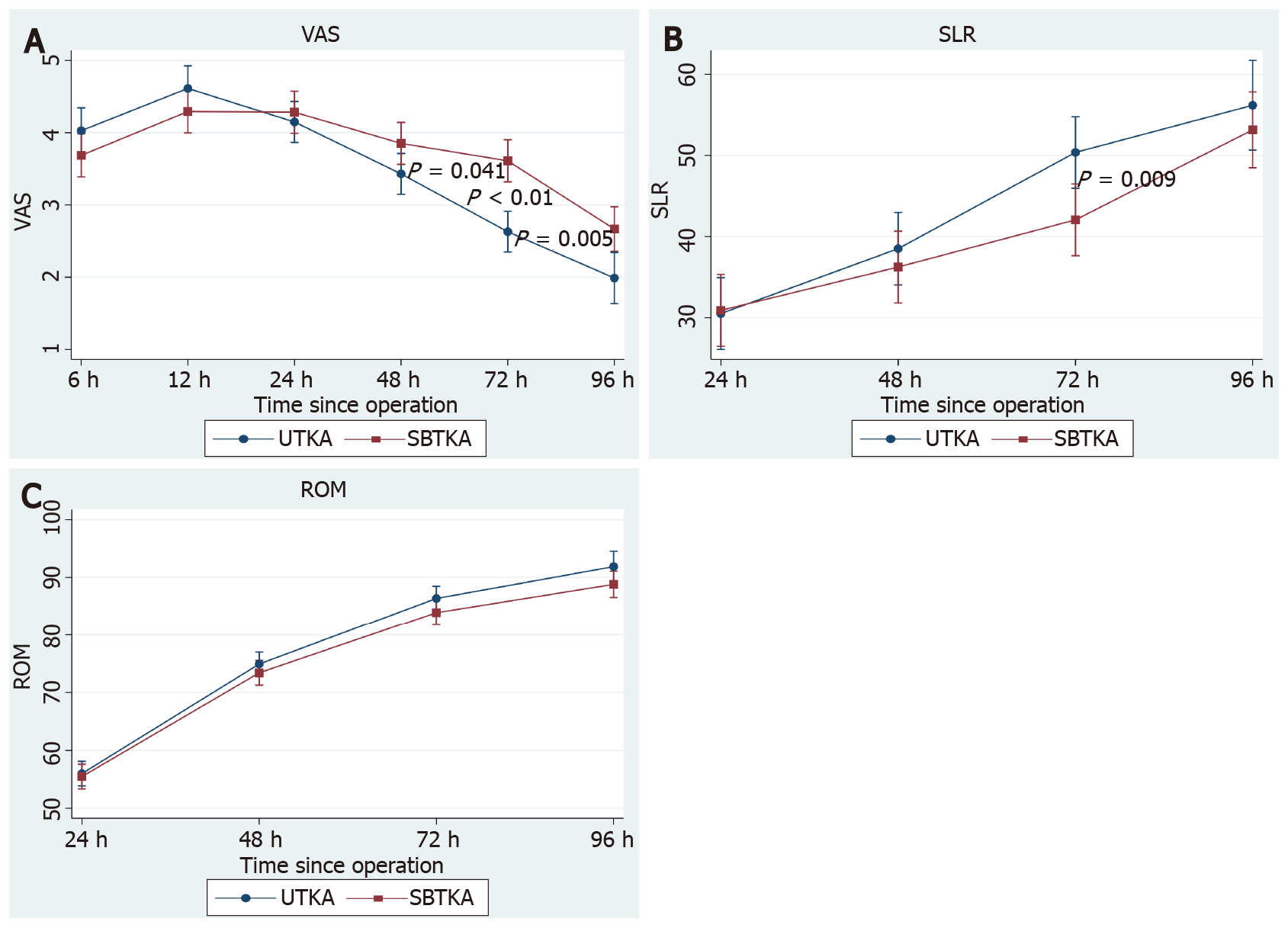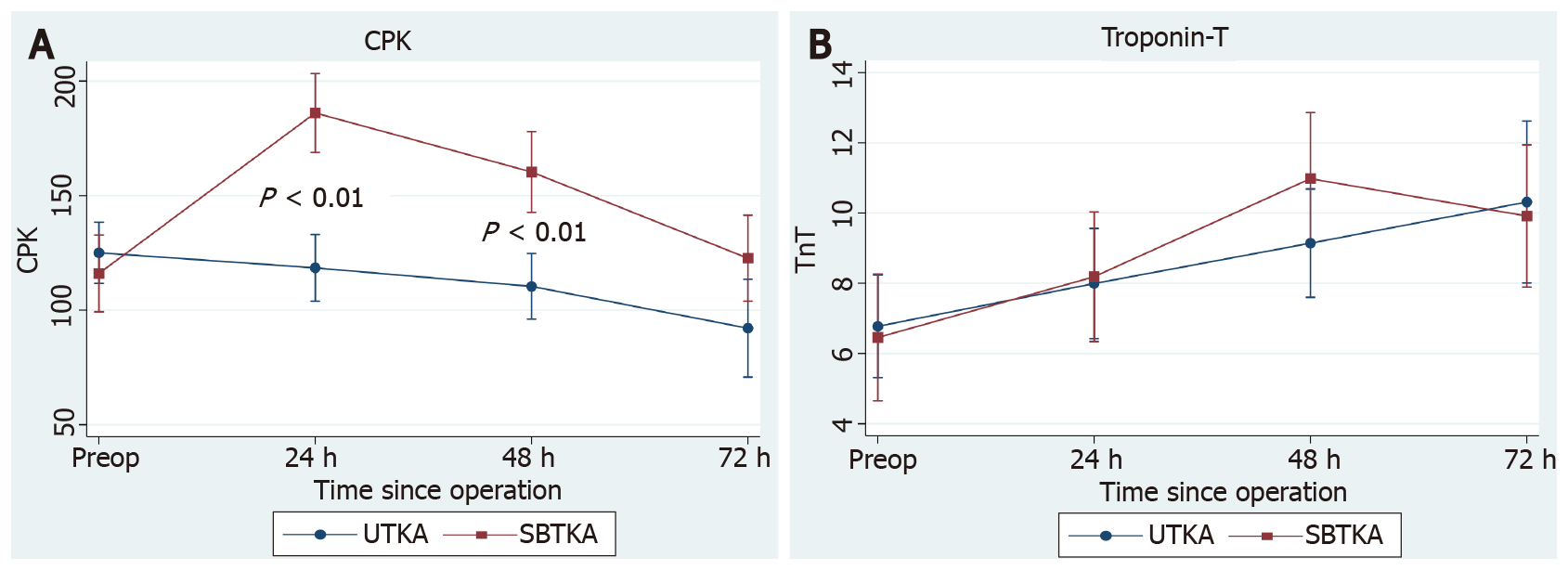Copyright
©The Author(s) 2022.
World J Orthop. Jan 18, 2022; 13(1): 58-69
Published online Jan 18, 2022. doi: 10.5312/wjo.v13.i1.58
Published online Jan 18, 2022. doi: 10.5312/wjo.v13.i1.58
Figure 1 Serum hemoglobin levels preoperatively and at 24 h, 48 h and 72 h after the surgery.
UTKA: Unilateral total knee arthroplasty; SBTKA: Safety of bilateral one-stage total knee arthroplasty.
Figure 2 Index changes in different time periods after operation.
A: Visual analog scale scores for pain intensity determined at 6 h, 12 h, 24 h, 48 h, and 72 h after the surgery; B: Straight leg raise assessed at 24 h, 48 h, and 72 h postoperatively; C: Range of knee motion measured at 24 h, 48 h, and 72 h after the surgery. VAS: Visual analogue scale; ROM: Range of knee motion; SLR: Straight leg raise; UTKA: Unilateral total knee arthroplasty; SBTKA: Safety of bilateral one-stage total knee arthroplasty.
Figure 3 Changes in creatine phosphokinase and high-sensitivity Troponin-T before operation and at 24 h, 48 h, and 72 h after operation.
A: Creatine phosphokinase evaluated preoperatively and at 24 h, 48 h, and 72 h postoperatively; B: High-sensitivity Troponin-T preoperatively and at 24 h, 48 h, and 72 h postoperatively. CPK: Creatine phosphokinase; UTKA: Unilateral total knee arthroplasty; SBTKA: Safety of bilateral one-stage total knee arthroplasty.
- Citation: Laoruengthana A, Rattanaprichavej P, Samapath P, Chinwatanawongwan B, Chompoonutprapa P, Pongpirul K. Should we use similar perioperative protocols in patients undergoing unilateral and bilateral one-stage total knee arthroplasty? World J Orthop 2022; 13(1): 58-69
- URL: https://www.wjgnet.com/2218-5836/full/v13/i1/58.htm
- DOI: https://dx.doi.org/10.5312/wjo.v13.i1.58











